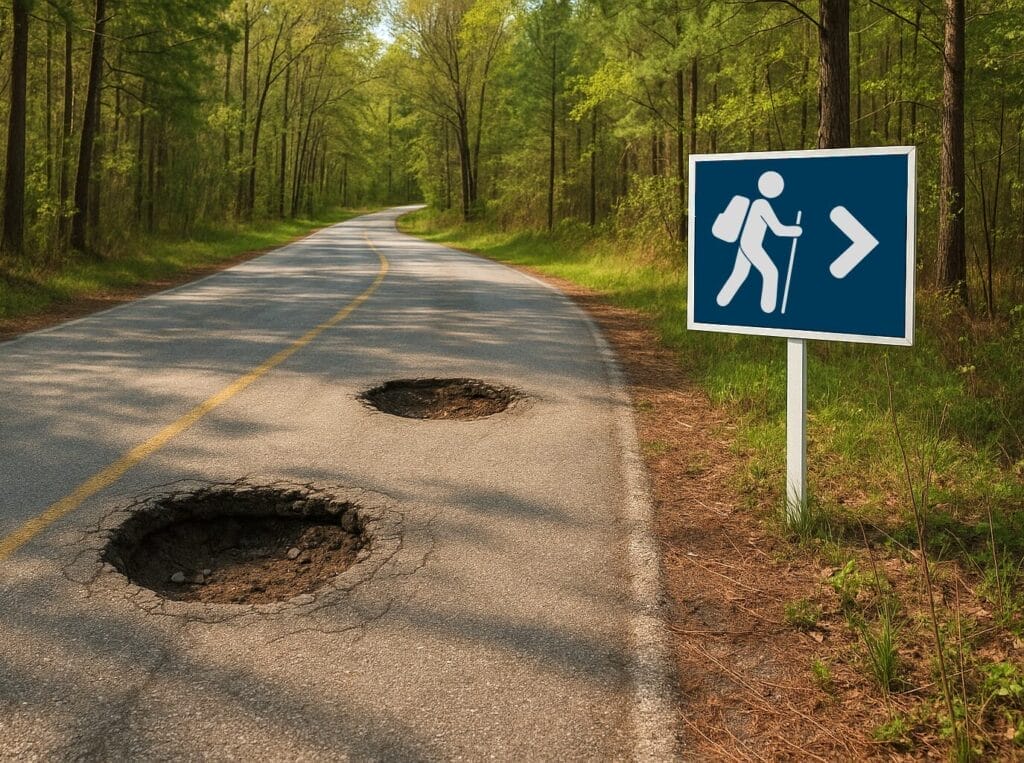As stewardship program is up for renewal, northern counties’ budgets, economies are squeezed by how much land already is taken out of equation
Like practically everyone else in Wisconsin, state Senate President Mary Felzkowski praises the idea that started the Knowles-Nelson Stewardship Program: In 1989, the Legislature greenlighted $250 million over a decade to buy up land for outdoor recreation.


“Totally in favor of that,” said the Tomahawk Republican.
“But then it got, in my opinion, out of control.”
Specifically, the still-running program, now up to $720 million spent on acquiring land, has $16 million a year allocated to buying still more through the fiscal year ending next June 30. Its reauthorization after that is an open question.
On its own, the stewardship program has acquired, either by direct purchase, by giving money to nonprofit conservation organizations to buy land, or by buying permanent no-development easements, about 646,000 acres — equal to all the land in Dane County.
The acreage may equal Dane County, but it’s mostly not in Dane County, where the land taken off the tax rolls by the stewardship program totals only 6,200 acres.
About three-fourths of the land acquired has been in northern counties — meaning that the one program alone has locked up significant shares of all territory. In Oneida County, the program has acquired about 60,000 acres — 8 percent of the county, and, for comparison, about equal to the entire city of Milwaukee. In Iron County, about 16 percent has been taken by the stewardship program alone.
And stewardship isn’t alone: In total, about 5.9 million acres of Wisconsin, one-sixth of the state, is undeveloped government-owned land. In Vilas County, that total is 46 percent. In Forest County, it’s 60 percent. Add in roads, government buildings and other acreage not on the tax rolls, and what’s left to support local government?
Felzkowski, whose district includes everything northeast of Wausau, says it’s to the point that northern counties fear violating laws that mandate local services because they can’t hire staff. “They can’t bring in people because they can’t afford to pay them,” she said.
The state pays counties something in lieu of taxes, though “it doesn’t replace what privately owned land would pay,” said Felzkowski. “So we’ve put our counties and our towns in northern Wisconsin in very dire straits.”
And since the point of stewardship program is to lock out development by offering an attractive sum for private land when it goes up for sale, it blocks growth. Felzkowski talks to young people looking to buy land for some business venture “or even to build a home on — they can’t afford it because they’re competing with the state.”
“You have the trade-off,” she said. “You live in this beautiful area of the state. Well, yeah, we do, but we still need to pave our roads. We still need to educate our children.”
That takes a healthy economy, something Felzkowski sees as stymied by locking up so much land for recreation. It’s good for the tourism industry, but “what does tourism do?” she said. “How many family supporting jobs with benefits and retirement exist in tourism? Do we have that for the people that clean cottages? Do we have that for our waitresses and our supper clubs? Do we have that for amusement rides? Do we have that for fishing guides?”
“You look at the wealthiest parts of our state, Milwaukee with all its challenges, they still have very healthy economies and family supporting jobs,” she said. “Does Milwaukee care that we don’t have that in northern Wisconsin? I know Governor Evers doesn’t.”
The program’s reauthorization through 2030 was left out of the budget agreed to by the Legislature and the governor in July, with some Republicans now floating a proposal that refocuses its spending on maintaining lands the state already has while making the Department of Natural Resources get lawmakers’ approval for further major acquisitions.
“I’m not a ‘no’” on keeping the program, said Felzkowski, who is not a cosponsor, “but I want guidelines around it, which in my humble opinion are kind of common sense.”
For one, she’d like a cap on further acquisitions in counties where a large share of the land already was government-owned. She suggested 30 percent as a threshold.
Citing a case where Langlade County snapped up a defunct youth camp before learning that a private developer proposed a recreational use that would keep the land on the tax rolls, Felzkowski suggested giving counties an option to buy back land they bought with stewardship funds if it can be put to better use for local citizens.
“Also, if we’re going to do purchases, I want them by a population center,” she said. If the land is for recreation, buying it far from where most Wisconsinites live cuts against the purpose.
“The kids in Rhinelander do not need any more public land. They’re blessed with it,” she said. “I want the land to be closer to individuals that don’t have the same opportunities.”
But how much land? That’s a crucial question after the Wisconsin Supreme Court in 2024 killed off legislative oversight of major land purchases. The 5.9 million acres of undeveloped government-owned land in Wisconsin already is larger than all the metropolitan areas of Milwaukee, Madison, the Fox Valley and Janesville put together. It’s bigger than eight other entire states. Is it not enough?
“I’ve asked that,” said Felzkowski, when nonprofit conservation organizations “come to see me because they always told me how wrong I am and what I just don’t understand. I just said, ‘Well, what’s your number? What’s enough?’ Nobody has that answer.”
Patrick McIlheran is the Director of Policy at the Badger Institute.
Any use or reproduction of Badger Institute articles or photographs requires prior written permission. To request permission to post articles on a website or print copies for distribution, contact Badger Institute Marketing Director Matt Erdman at matt@badgerinstitute.org.
Submit a comment










